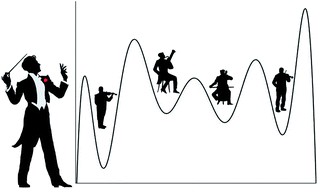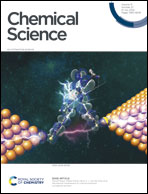Ensemble representation of catalytic interfaces: soloists, orchestras, and everything in-between
Abstract
Catalytic systems are complex and dynamic, exploring vast chemical spaces on multiple timescales. In this perspective, we discuss the dynamic behavior of fluxional, heterogeneous thermal and electrocatalysts and the ensembles of many isomers which govern their behavior. We develop a new paradigm in catalysis theory in which highly fluxional systems, namely sub-nano clusters, isomerize on a much shorter timescale than that of the catalyzed reaction, so macroscopic properties arise from the thermal ensemble of isomers, not just the ground state. Accurate chemical predictions can only be reached through a many-structure picture of the catalyst, and we explain the breakdown of conventional methods such as linear scaling relations and size-selected prevention of sintering. We capitalize on the forward-looking discussion of the means of controlling the size of these dynamic ensembles. This control, such that the most effective or selective isomers can dominate the system, is essential for the fluxional catalyst to be practicable, and their targeted synthesis to be possible. It will also provide a fundamental lever of catalyst design. Finally, we discuss computational tools and experimental methods for probing ensembles and the role of specific isomers. We hope that catalyst optimization using chemically informed descriptors of ensemble nature and size will become a new norm in the field of catalysis and have broad impacts in sustainable energy, efficient chemical production, and more.

- This article is part of the themed collection: 2022 Chemical Science Perspective & Review Collection


 Please wait while we load your content...
Please wait while we load your content...